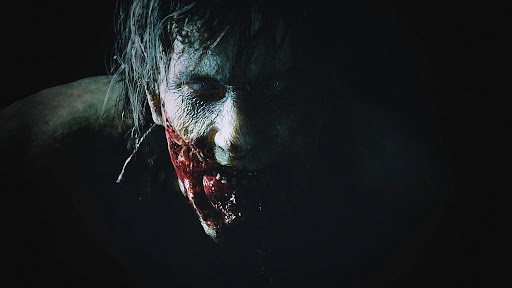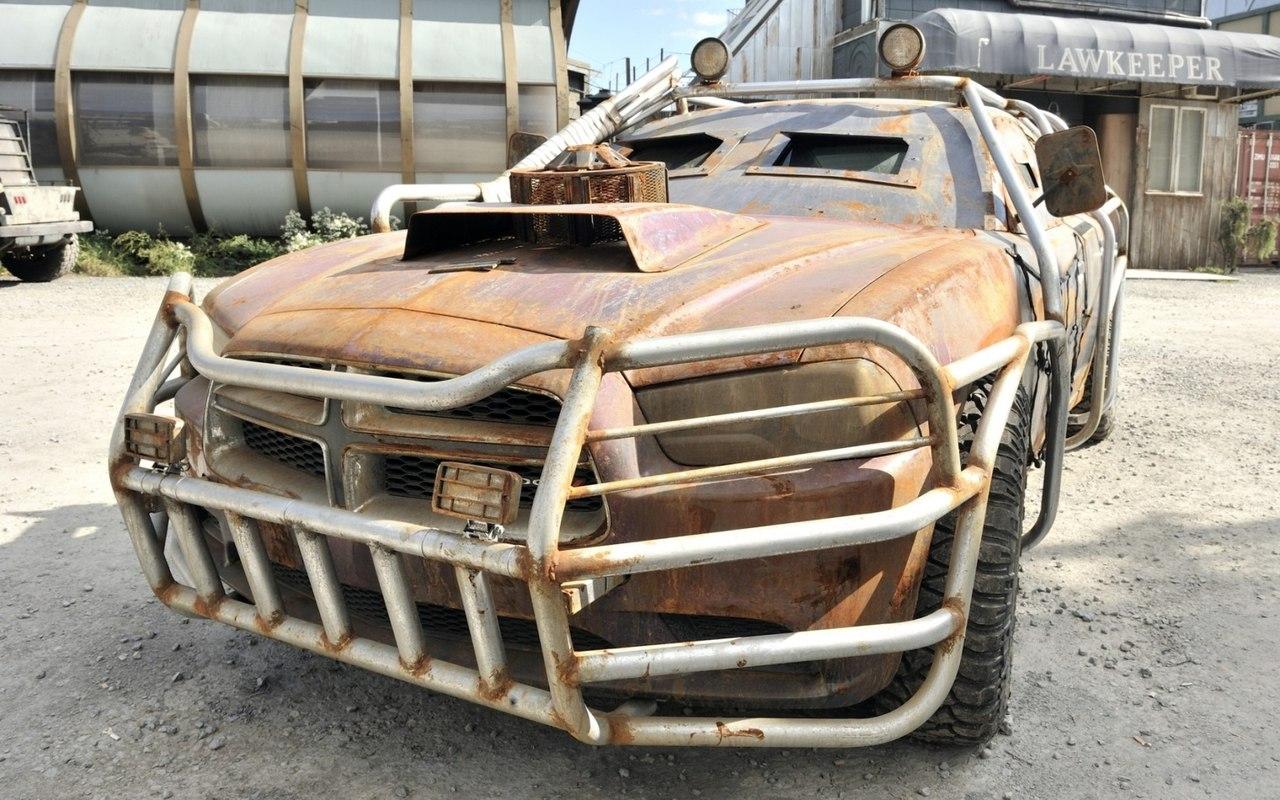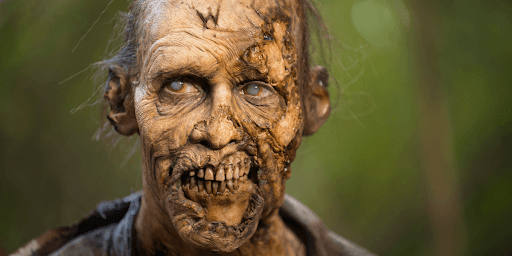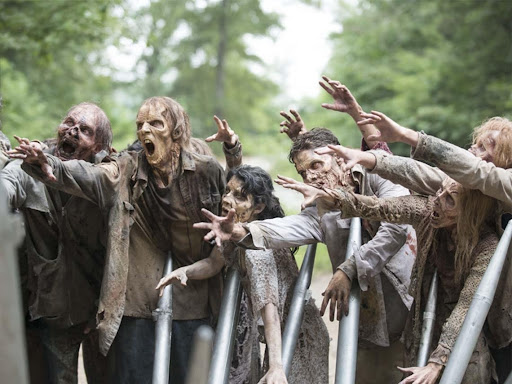For some reason, the idea of Zombification, the reanimation of your corpse, seems to fantasize about human beings. The one question, ‘How do zombies come back to life?’ echoes the most.
Fortunately, we have a definite answer to this question- death followed by reanimation.
Living again might sound appealing, but Zombification is quite a discomforting experience.
Humans live a healthy life, naïve of being infected, live a healthy life and eventually meet their death. But the story doesn’t end at death. Individuals come back to life through reanimation. And no, reanimation doesn’t give you the pleasures of life. It merely is living, mostly about milling around f aimlessly and devouring fresh brains. Sounds displeasing?
Read on as we elaborate on the known and unknown aspects of Zombification.
How do humans turn into zombies?
Let’s state the obvious; you need a powerful force or factor to bring the dead back to life. Well, what has caused more destruction and human eradication than viruses? And in this case, it is a virus too. The virus is yet to be given a moniker and is popularly known as the zombie virus.
Any living being contracting the virus is bound to be reunited after death. However, the definite transmission modes and the reanimation trait are yet to be determined. It is still unknown whether the virus is human-made or exists naturally. Some even hint at a supernatural soring of the virus. In all honesty, there is very little that we can say with certainty about this virus.
However, a few aspects and factors lend us wisdom about the zombie virus. Some of these aspects include the probable life cycle of the virus. The virus stays, grows, and feeds within the host’s body. However, one unique point of this virus is that it doesn’t usually cause the host’s death. It is thought that the virus doesn’t have any side effects. The virus exists in dormancy and waits for the host to die.
Once the host passes away, the virus begins its life cycle. And once initiated, the certainty is scary and displeasing. Below we have discussed the possible transmission modes of the virus. Note that these transmission modes aren’t proved or backed by evidence; these are conjectural assumptions drafted after observing the behavior of the virulent.
How transmission of the virus works
Like other viruses with a set timeline, life cycle, and transmission modes, the zombie virus is assumed to follow the same trend. The zombie virus is believed to follow two separate yet parallel ways of transmission. The stages of the zombie virus are named the latent phase and the fluid or contact phase. We have addressed these phases individually to help build a better understanding.
Latent Phase
As the name implies, the latent phase is the hidden’ typically known as the ‘dormancy’ stage of the virus. Like other existing viruses, the zombie virus also has the first stage as the latent stage; however, there might be some glaring differences between the average virus’s latency and the zombie virus’s latency.
Typically, a latent virus has a set timeline and latency period. The virus stays dormant without harming the host. But as the virus receives the trigger or naturally completes its latency cycle, it enters the activation mode. And this shift into active mode is spanned over some period and not for an entire lifetime.
Once in the activation mode, the virus weakens the immune system, deteriorates the health, and may result in the host’s death. Sometimes, the virus is treated, and the host starts living a healthy life again. It is a smooth life cycle. Now let’s compare it with the latency of the zombie virus.
First, how you may acquire the zombie virus is still a mystery. But some theories suggest the virus may spread through water sources, air, or a mutated form. In either case, once you have acquired the zombie virus, it breaches your neural barriers and resides in your brain. Then the virus rests without harming the brain of the host.
One uniquely exclusive aspect of the zombie virus is that the virus le the host enjoy a healthy life. It doesn’t render any harm to the host. The infected individual might not even discover the viral breach. Unlike other viruses, the zombie virus becomes active after the host’s death. Note that the cause of death may not necessarily be related to the zombie virus. After the host’s end, the virus rewires the deceased brain resulting in reanimation—the dead turn into a living corpse, staggering around, hunting for brains.
Fluid/Contact Phase
Typically, any contact with a zombie is presumed to incur immediate Zombification. However, the reality is far from this popular myth.
Other viruses are usually transmitted by the air, infected water sources, and physical and fluid contact with the infected individual. Airborne viruses are found in the atmosphere, infecting every individual that inhales the infected air. The same goes for waterborne viruses. Once an individual consumes the infected water, it enters the bloodstream, infecting the individual.
The zombie virus’s most well-known and established transmission mode is by bites and gouges from a zombie. Though the bits from zombies don’t typically result in the individual’s death, they may transfer the dormant viral strain into your bloodstream. However, some hypothesized that zombie bites incur instant neural failure resulting in a fatality.
The harmful bacteria in a zombie’s mouth also transfer into the individual’s bloodstream. These transmitted bacteria may exacerbate the viral reaction, propelling neural failure. Most zombie fanatics and theorists don’t support the immediate death hypothesis.
Also, zombie bites aren’t the only mode of transmission. Scratches and gouges are the most common mode of communication. But these scratches don’t result in death unless they are deep enough to cause ample bleeding or exacerbate the infection. However, the chances of fatality can be minimized if the infected region is removed. Amputation would be ideal if the victim sustained a scratch on the appendage. Though, bites and scratches on the torso are universally fatal.
How reanimation occurs?
Reanimation is the active mode of the zombie virus. The operational way brings the deceased back to life and causes the corpse to move around, hunting for brains. But if you have a zombie fanatic, you must have wondered how zombies differ from us. Well, if they are the reanimation of humans, why are they different? It concerns the brain, the central processing unit of human beings and the control center of all our activities.

The anatomy of a zombie’s brain
Remember how a person turns into a zombie? Through poisoning, incision, or by sudden death. Regardless of the reason behind a person’s death, reanimation is unavoidable if infected with the zombie virus. Typically, an efficient brain efficiently controls activities, but what about a reanimated brain? Zombification or reanimation is the mere rewiring of the brain. It doesn’t t mean jumpstarting or resumption of the brain. Once deceased or dead, it is improbable that the brain would regain its optimal functionality.
How is the zombie’s brain different from ours?
The most obvious thing one notices about zombies is their unusually limited walking movement. So, let’s first talk about the part of the brain that controls walking- the cerebellum. The virus rewires the cerebellum to the extent that it allows the living corpse to take a few steps staggeringly. This damaged cerebellum hinders the zombies from moving fast, running, jumping, and skipping. Do any activity that includes fast movements. These beings are allowed to walk slowly, struggling with every step.
Another undeniable factor about zombies is their unquenchable hunger, controlled by the hypothalamus. A damaged hypothalamus means an uncontrollable and almost permanent phase of hunger. Zombies are predicted to die if they don’t consume brains for a few days. However, their exclusive preference for brain consumption remains unknown and may have to be related to our innate animal instinct or some screwed-up brain rewiring.
Interestingly enough, zombies don’t sleep too. These bloodthirsty beings are awake for an entire day. And this is a consequence of a damaged pineal gland. The pineal gland has a specialized area that regulates the sleep-wake cycle; any damage to that area results in an abnormal or aborted circadian cycle. The zombies stay in the permanent day phase, causing a disturbed metabolism, evident by their insatiable hunger.
In short, reanimation is the consequence of significant brain rewiring. This rewiring makes the dead mill aimlessly run amok in search of brains without a chance to catch a few winks of sleep.
Reanimation isn’t what you call a second chance at life; it is a somewhat atypical and ugly consequence of a viral infection.
How does the zombie virus cause reanimation?
Plenty of assumptions and hypotheses exist about the zombie virus’s functionality. However, we can establish some facts by studying the behavior of the zombies. We can broadly divide the behavior into three categories.
- Continuous Decomposition
The most glaring thing that comes to mind when discussing zombies is their decaying and decomposing selves. To qualify, a zombie must pertain to continual decomposition for a being (or a corpse). The reanimation process is not similar to rebirth. If reanimation were similar to resurrection or renewal, zombies would ha clean and glowing skin. Even if not glowing, their skin would be decaying continuously.
The underlying reason for reanimation is the autolysis process. In this process, the enzymes eat up the cells resulting in cell death. In the case of zombies, the autolysis process doesn’t stop or reverse once started. Along with autolysis, insect infestation contributes to the decaying appearance of zombies.
2. Infection through bodily fluid
Another condition of the zombie virus is its transmission through bodily fluids. This criterion is crucial as it validates that no one turns into a zombie instantly after the initial contact. Like other viruses, the zombie virus cannot be contained, which is a daunting challenge. It pertains to the asymptomatic nature of the virus, which hinders diagnosis.
For the zombie virus to enter an individual’s bloodstream, it has to be transited through bodily fluids. Bites and scratches are the two critical modes of virus transmission. However, a bite or scratch has to be deep enough to let the viral strain enter your bloodstream. A slight scratch may spare you from getting the infection.
3. A stimulus making them crave flesh
Zombies are on a constant lookout for fresh brains. They need an inexhaustible amount of brains to satisfy their hunger. This undying hunger for flesh indicates that the virus must have somehow rewired their motor systems. The reprogramming of the brain makes them crave meat, particularly brains.
Zombies are also thought not to consume the flesh or brain of deceased or dead beings. That means their reprogramming has reactivated a few senses, including their ability to distinguish dead and living, diseased and uninfected beings, various species, and their species. Note that the virus simply rewires the brain, hijacking and reprograming the existing neural system to fulfill the current demands.
In a nutshell, the zombie virus requires bodily fluid for its transmission. The transmission typically results in the transfer of the virus into the bloodstream. It is highly unlikely that this transmission would cause the fatality of the infected individual. As mentioned earlier, the virus stays dormant within the host’s body, mainly in the brain.
The virus fends for itself, acquiring sufficient nutrients until the host’s death. Once the host passes away, the virus activates itself, followed by the reanimation of the deceased individual.
Can zombies come back to life?
The process of reanimation is a complex idea. Reanimation after death was once a widespread practice in some cultures. The most popular one was of the enslaved Haitians. These people thought of bodies as vessels trapping the souls. So, to liberate the souls from ships, we discovered reanimation through powerful sorcery and voodoo practices.
Come to think of it, those reanimated enslaved people are remarkably similar to the zombies we know today. Just like those reanimated slaves could not move efficiently or perceive right and wrong, zombies, too, exhibit the same characteristics. Unlike those enslaved people where sorcery rendered them disabled, the lack of these skills in zombies results from a damaged frontal lobe.
In reality, some viruses share some characteristics with the zombie virus.
However, it is well-established that no virus could result in reanimation after death. Some viruses make the infected beings behave like zombies, known as neurotropic viruses. These invade the neural network and disrupt the functionality of our nervous system while residing in the brain. An individual suffering from this type of virus exhibits strange behavior, with aggression as a prominent characteristic.
There isn’t any evidence that supports the existence of a zombie virus. But considering the constantly evolving nature of the viruses, the possibility of their existence cannot be entirely disregarded. A virus likely becomes its nature and mutates its strain to develop a zombie-like virus. It is possible that a virus infects the neural networks, weakens the brain, and induces unquenchable hunger and staggering gait. Until this mutation takes the shape of reality, reanimation after death will remain an impossibility.

How can we save ourselves from reanimation?
When a virus invades a population, it infects many individuals, as there is no vaccine against it. Following the same viral trend, the zombie virus, if it happens, will infect many people, rendering them helpless.
So, to save yourself from this Zombification, prevention is a must. The foremost measure is to seek refuge in a place accessible and far from the virus outbreak. I prefer places with high fences or boundaries around. Zombies’ limited gait hinders them from climbing fences or hiking up a mile to hunt for a brain.
Big cities are the most vulnerable and the easiest targets for zombies. These cities must offer sufficient geographical hindrances that may prevent the zombie virus from spreading.
Conclusion
So, here is our elaborative take on ‘How do zombies come back to life?’ whether you are infected through bodily fluid or some airborne zombie virus, the consequence is the same, death followed by reanimation.
Once reanimated, you will find a corpse milling aimlessly or running amok for fresh brains. Either way, you don’t want that decaying, forever-hungry corpse to see you. So, before you become prey, find shelter, and stay there.




